The best time to visit Mexico City is in spring! The cold winter mornings have passed by and yet the heat of the summer is still a ways off. And best of all, spring brings the ravishing violet petals of the Jacaranda trees into full bloom. The city becomes awash in its purple flowers, seen from below and above. When you’re flying into Mexico City in the Spring keep your eyes peeled as you descend. You’ll be amazed to find that the purple trees can be easily seen from the air above. The first time I walked outside my hotel to see these beauties in real life, I was awestruck. After arriving in the darkness of the evening, the morning light greeted me with an explosion of colour. The Jacaranda trees in Mexico City, with their pale periwinkle and violet blossoms that are the true symbol of primavera.
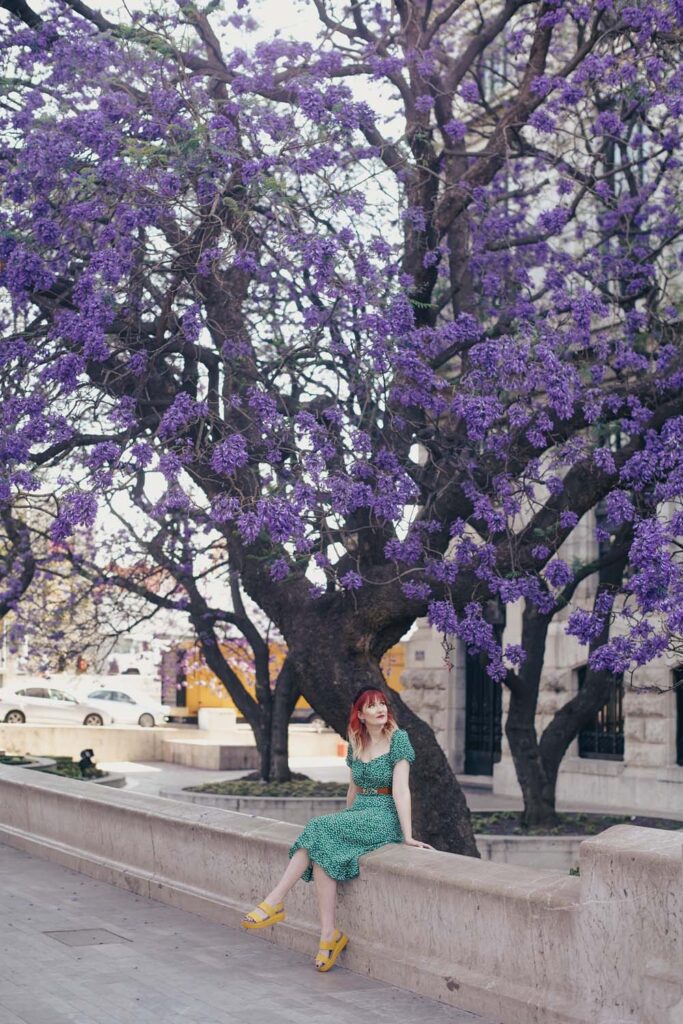
Just as people flock to Japan and Washington D.C. during Cherry Blossom season, Mexico City’s Jacaranda trees are a huge draw for locals and tourists. And yet, to my surprise, tourists here haven’t completely taken over and ruined the views. Like is sometimes in the case for Cherry Blossoms. You can still find so many stunning locations in Mexico City painted with these brilliant blossoms that aren’t packed with tourists. To have a picnic under the trees you don’t have to feel like you’re fighting through the crowds. The Jacaranda trees of Mexico City are still one of the most underestimated Springtime sights around the world. And something you need to see on your next trip to Mexico City. While the Jacaranda trees in Mexico City are spread out all over I’ve listed below my favourite spots to visit to see these spectacular saplings.
- The History of the Jacaranda Trees
- When To See Them
- Best Jacaranda Trees in Mexico City
- Bosque de Chapultepec / Chapultepec Castle
- Paseo de la Reforma
- Sofitel Hotel Cityzen Bar
- Plaza de la República
- Alameda Central
- Cafe don Porfirio
- Alameda de Santa María
- Avenida Cicerón
- Avenida Horacio
- Lope de Vega
- Soumaya Museum
- Fuente de Cibeles
- Casa Jacaranda
- Parque México
- Avenida Veracruz
- UNAM
- Avenida Francisco Sosa
- Panteón de Dolores
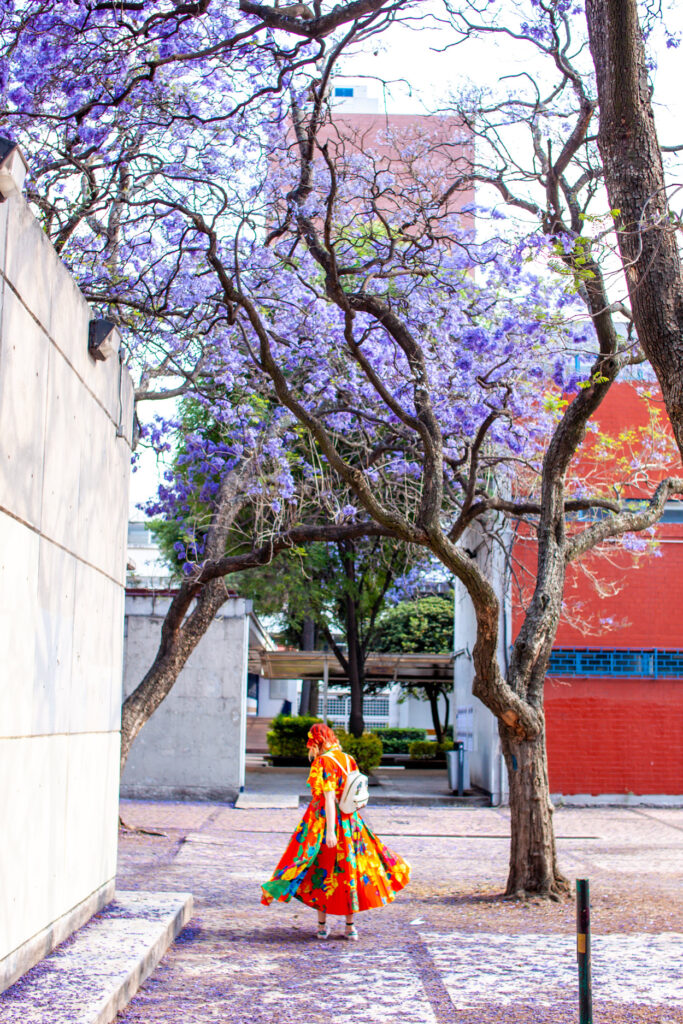
The History of the Jacaranda Trees
While you might think these iconic trees are native to Mexico, the trees were actually brought in from Brazil. The story of how the Jacaranda trees in Mexico City arrived here is a fascinating tale. In 1896, Japanese immigrant Tatsugoro Matsumoto was sent to Mexico City to work for President Porfirio Díaz. Matsumoto had come to Mexico City to forge a friendship between Japan and Mexico. He had previously worked in Peru for their government and there, he had made a name for himself. Díaz was looking for a landscape architect to jazz up the forests around his residence inside Chapultapec Castle.

Matsumoto and the Jacarandas
The most obvious choice for a tree that symbolized friendship between Japan and Mexico would have been the sakura or cherry blossom tree. But the high altitude and weather in Mexico City didn’t suit the sensitive blossom. So instead, Matsumoto came up with the idea of importing the Jacaranda tree from Brazil. It had the same effect as the cherry blossom, with a springtime bloom that washed the city in bright colours. Seemingly changing the landscape of the city during those precious few springtime months. President Porfirio Díaz was so impressed by the trees he asked they be planted all over the city!
Matsumoto began working on transforming the city in 1920. He started on the main avenues that spread out from Chapultapec Castle. You can still see the oldest, original Jacaranda trees Matsumoto planted along the Paseo de la Reforma. During his time working on the Jacaranda trees in Mexico City, Matsumoto fell in love with the city. He found the colonial architecture where he lived in the Roma neighbourhood absolutely entrancing. When he went back to Japan after his contract was over it wasn’t to return home. It was to collect his wife and bring her to Mexico City where they would live out the rest of their lives. Matsumoto died in Mexico City, in 1955 at the age of 95.

But the trees live on in his memory, their yearly blossoming a welcome sign of the end of winter. In Japan, they call celebrations under the cherry blossom trees hanami (‘flower watching’ parties.) The same kind of celebrations occurs in Mexico City when the jacaranda blooms. A true symbol of the lasting connections between Japan, Mexico City and, of course, the great landscape architect Matsumoto.


When To See Them
Jacaranda trees are in full bloom from mid-March to April. And they’re at their best in the latter part of that period. During this time, the trees burst into life, and their purple flowers provide a lovely contrast against the crowded, urban cityscape. My favourite time of year is when the blooms start to fall and caress the ground. There is something so magical about sitting in a park and watching the blossoms fall like drops of rain. Despite all the street sweepers, there is almost always a carpet of blossoms everywhere you go underneath the trees. Some people call this the “Mexican winter.” It’s a time where the city sheds its old skin, getting ready for new growth.
Many of the city’s most popular areas where you’ll find the Jacaranda trees get very busy. Especially in the afternoon. Plan to arrive early in the morning to get the best chance at having a peaceful walk through the trees.
It is no secret that spring is a popular time of the year to visit Mexico City. Be sure to book hotels in advance! This will ensure you don’t miss out on staying somewhere you had your heart set on. Check out our blog post all about the best neighbourhoods to stay in Mexico City! The Easter holidays are one of the busiest times of the year. Easter is a holy holiday for the Mexican people. Plan accordingly or try to avoid Easter weekend to miss the large crowds.

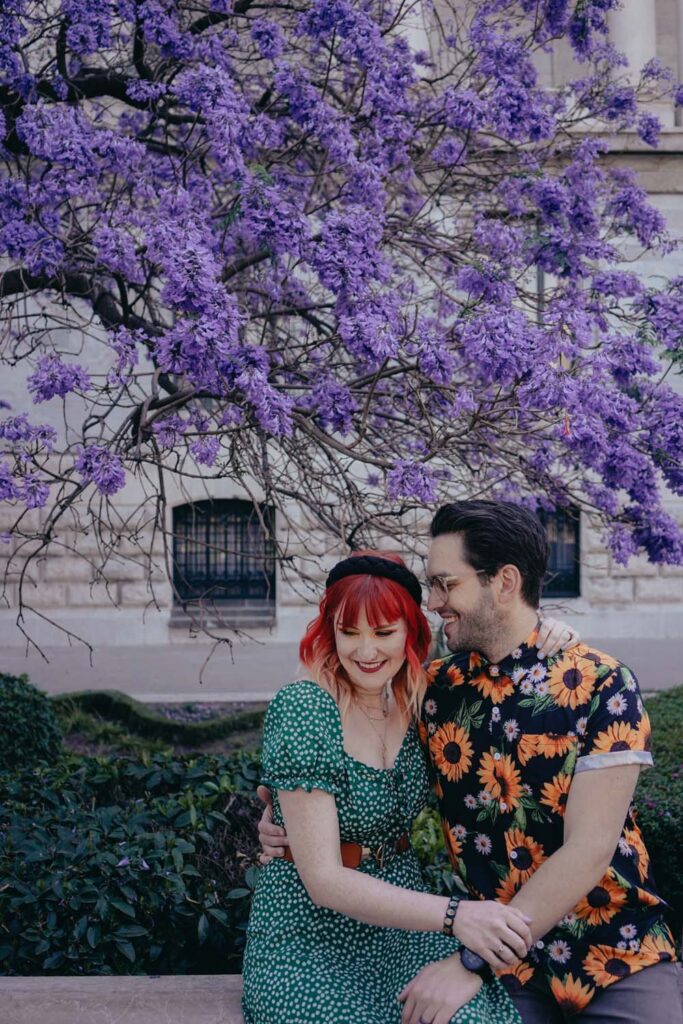
Best Jacaranda Trees in Mexico City
Bosque de Chapultepec / Chapultepec Castle
The best place to start your tour of the Jacaranda Trees in Mexico City is where the first tree was planted; Chapultepec Castle. Here you can see the original jacaranda trees planted for President Díaz Ordaz. As you walk up the winding road towards the castle, Jacaranda trees pop up as you begin to near the entrance. Standing on the balcony of the castle you can look out over the park to see all the blooming trees below.
If you don’t want to pay to visit the Castle itself, located at the top of the hill, you can wander the immense Bosque de Chapultepec or Chapultapec Forest that surrounds the castle. The forest is spread out over 1,600 acres, and you can spot different formations of beautiful trees throughout. One of my favourite things to do is take a boat out on Chapultepec Lake, where you can see the purple Jacaranda trees wrapping around the lake like a colourful hug.
The largest confluence of the trees can be found in the western part of the park called the Lago de Chapultepec 2a Seccion. This part of the forest is enormous and very spread out. Luckily you can hop on a rental bike or scooter to make your way around quickly and efficiently. I would highly recommend this because it’s so much fun and allows you to explore the entirety of this enormous green space.
Paseo de la Reforma
The most famous place to see the Jacaranda trees in full bloom is along Paseo de la Reforma. This is truly one of the most beautiful boulevards in the world during the springtime. The Jacaranda trees line either side of the broad avenue, creating a cascade of purple all down the road.
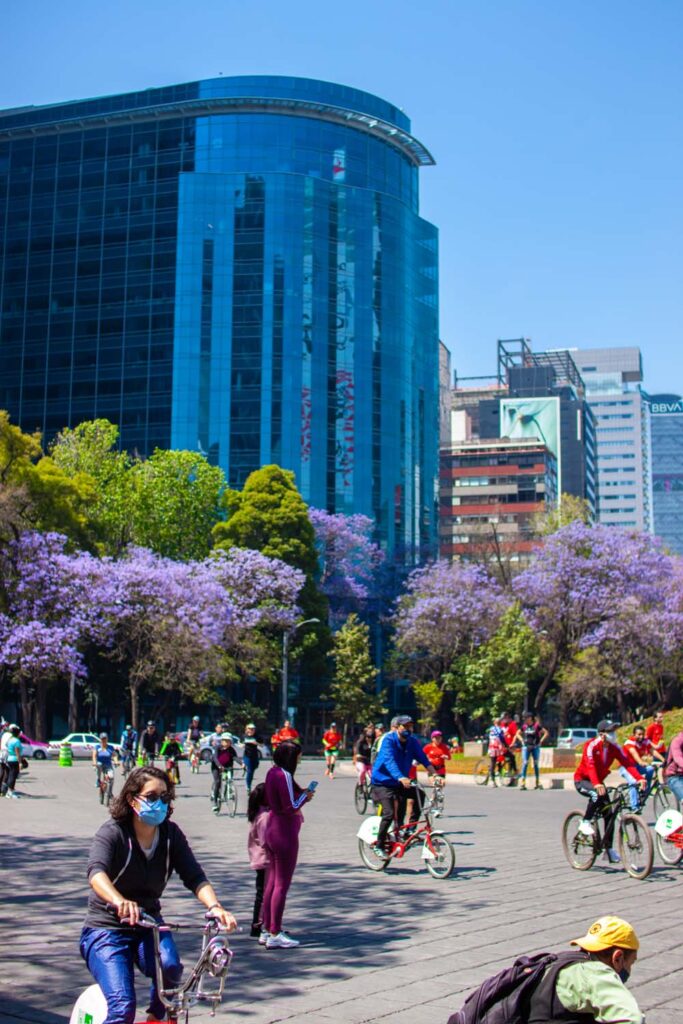
Take advantage of their vehicle-free Sundays when all cars are barred from the roads and pedestrians and cyclists take over the streets! You can peacefully walk along the avenues, rent a bike and take in the sights. All the while enjoying all the fantastic street vendors and artisans that pop up along the street.
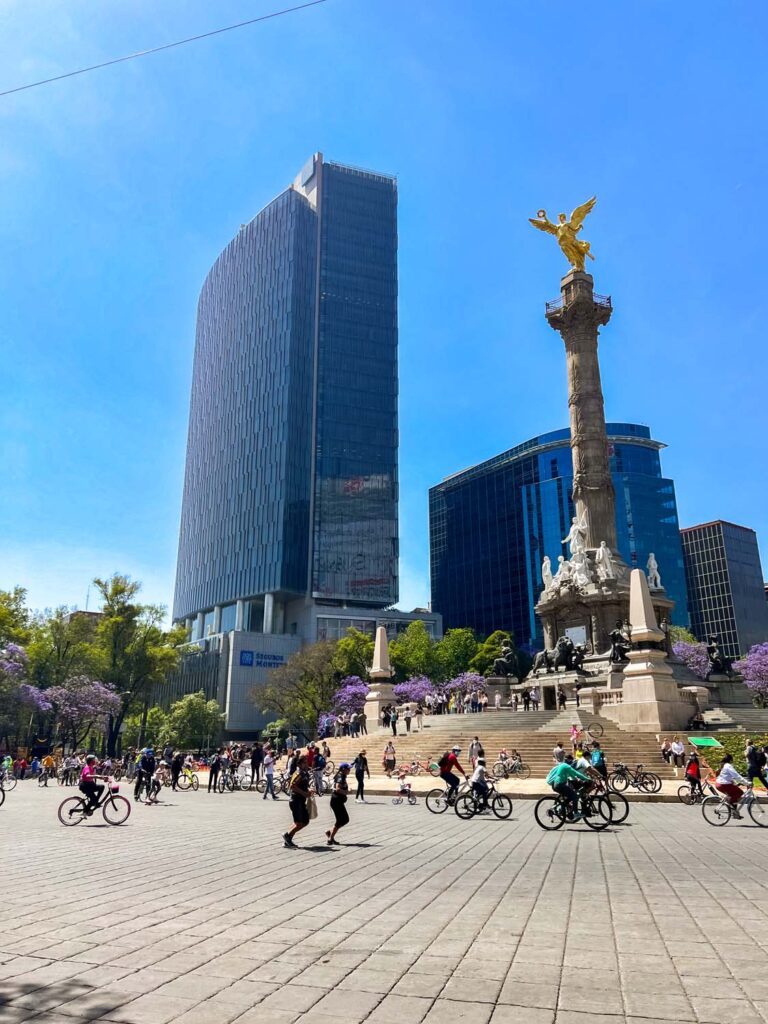

Sofitel Hotel Cityzen Bar
The luxurious Cityzen Bar, found on the top of the Sofitel Hotel, is a fantastic spot to sit and enjoy a view of the city from above. During the springtime, when the purple jacaranda trees colour the streets, there is no better to enjoy a cocktail complete with a view! Cityzen Bar looks out over the iconic Angel of Independence statue always encircled by blooming jacaranda trees. Although the restaurant bar is relatively expensive, (cocktails costing about $13-$15) the view is priceless!
The restaurant is open from Monday to Friday from 1:00 pm to 1:00 am and also on Saturdays and Sundays from 10:00 am to 12:00 am. Reservations are available only for breakfasts, on Saturdays and Sundays. I would highly recommend getting a brunch reservation to see these trees in the daylight!
Plaza de la República
Just west of the Paseo de la Reforma is the grandiose Plaza de la República. The beautiful arched Monument to the Revolution towers over the plaza. The eyes of the statues surrounding the dome look over at the blooming jacarandas. The monument also functions as a mausoleum for the heroes of the Mexican Revolution of 1910. Several Jacaranda trees were planted in the surrounding garden quadrants. Each one springing to life with vibrant petals come the middle of March.
Alameda Central
Alameda Central is one of the most famous parks in Mexico City and probably the most popular Jacaranda viewing spot. It has been a gathering place for locals for hundreds of years. The park was built in 1592 under the order of Viceroy Luis de Velasco II. It is now considered the oldest public park in the Americas. But long before it was a public city park, the area was an essential site for the Aztec community. It was here where they held their enormous marketplace long before Spanish colonization. Visiting this place is truly like stepping on the cobblestones of Aztec Mexico City.

Alameda is from the Spanish word “álamo,” which means “grove of poplars.” Sadly, the poplar trees that were once spread out through the park do not remain today. Today, the trees have been replaced by ash, chestnut and willow trees. But in addition to those trees, the park is also home to dozens of Jacaranda trees. They pop their heads out over the top of the various pathways around the park. And most impressively, the tree surrounding the Palacio de Bellas Artes and Parisian metro sign make for fantastic photo ops.
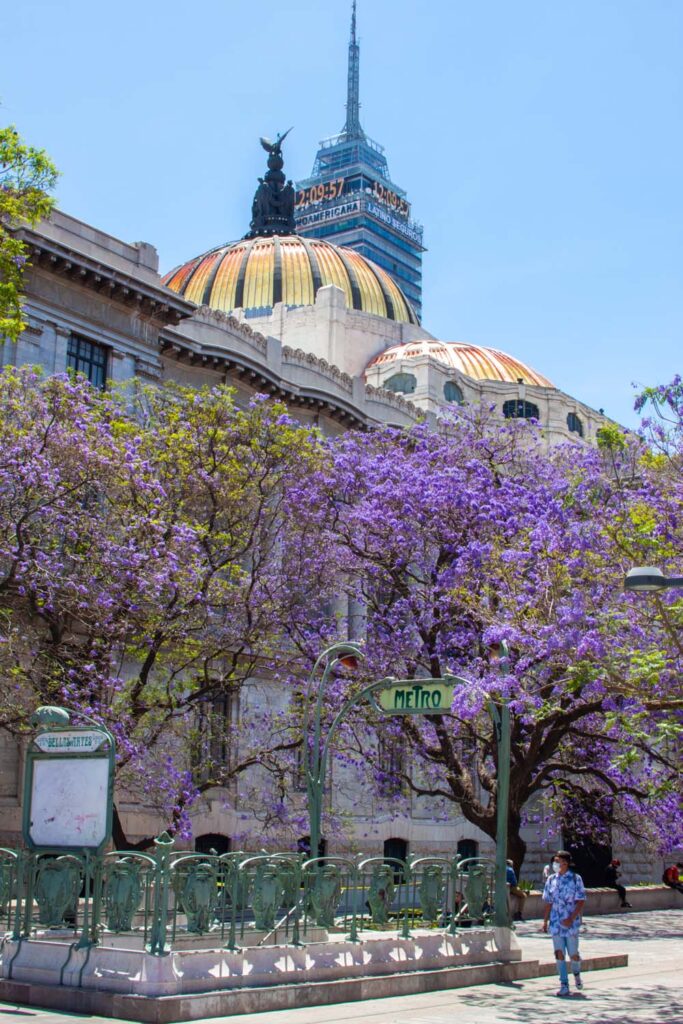
Cafe don Porfirio
Across the street from Alameda Central is the Sears Centro Historico building. Take the elevator up the eighth floor to visit the stunning Cafe don Porfirio. The cafe has a prime location looking out over the city below. It is the best place to view the Palacio de Bellas Artes. During jacaranda season, you can really see how impressive the trees are from above. The drinks in the cafe are exceptionally well priced. But be sure to arrive early as there isn’t a lot of seating on the popular rooftop deck.

Alameda de Santa María
In the Cuauhtémoc borough, to the north of the historic centre, is the Colonia Santa María la Ribera. This area is one of twenty neighbourhoods in Mexico City designated as “Barrios Mágicos” or “magical neighbourhoods.” The central meeting point for locals and tourists is the Alameda de Santa María la Ribera. In the centre of this bustling park is the famous Morisco Kiosk. The Morisco Kiosk was built by José Ramón Ibarrola for the Mexico Pavilion at the 1884 World’s Fair. Located in New Orleans, after the fair was over, the Kiosk was brought back to Mexico City in 1903. It was placed here in the park to attract more residents to the neighbourhood. Surrounding the brightly coloured Pavillion are dozens of Jacaranda trees. The trees really pop against the Kiosk’s red paint and surrounding green parkland.
Avenida Cicerón
Polanco is one of the most exclusive and luxurious neighbourhoods in Mexico City. Polanco is often called the “Beverly Hills of Mexico” as it’s known for its pristine streets lined with high-end brands. Avenida Cicerón is located in the north-western part of town. Walk along this peaceful, primarily residential avenue to observe the beautiful purple trees.
Avenida Horacio
Avenida Horacio, particularly the areas around Americas Park, is another spot to find a confluence of Jacaranda trees. The quaint and calming forest that pops up in the middle of the busy street is one of the best places to sit and enjoy a sweet treat. All the while shaded under the floral canopy.
Lope de Vega
Head towards the small side street of Lope de Vega, between Avenida Homero andAvenida Ejército Nacional Mexicano. Here the Jacaranda trees are so giant they touch each other as they grow over the streets. Creating one of the lushest congregations of the trees anywhere in the city. The road is named after the Spanish writer Lope de Vega. Vega was one of the most prolific authors in the history of Spanish literature.
Soumaya Museum
The Soumaya Museum is one of the most iconic contemporary pieces of architecture in Mexico City. The building was designed by the Mexican architect Fernando Romero and is covered by 16,000 hexagonal aluminum tiles. Several large Jacaranda trees have been planted outside the building. Their colours reflecting onto the hundreds of mirrored tiles, creating one of the most spectacular views in the city.
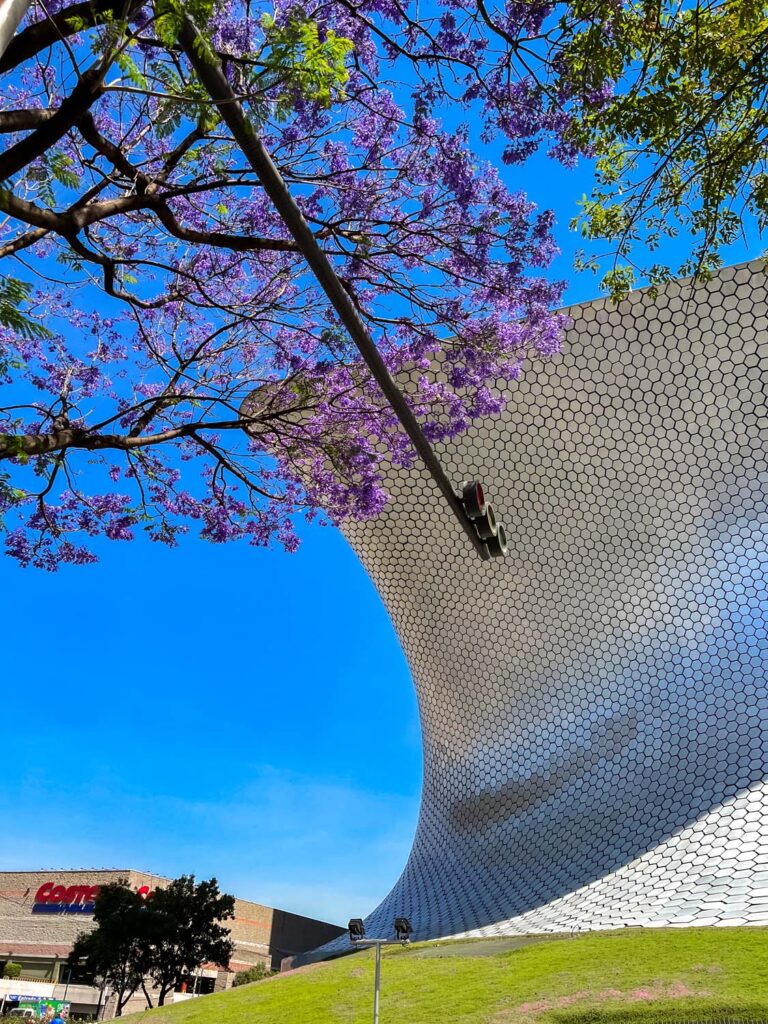
Fuente de Cibeles
As you descend from Paseo de la Reforms into Roma Norte, you’ll pass by the Fuente de Cibeles. The Fuente de Cibeles or Fountain of Cybele is a replica of a famous fountain originally sculptured in Madrid, Spain. The fountain was created in 1980 to symbolize and honour the brotherhood between the Spanish and Mexican communities. Even today, it is one of the most beloved sights in the city. The roundabout is surrounded by Jacaranda trees. You’ll notice more of the vibrant blossoms running down each side street that veers off from the central circle. Follow your instincts to discover even more stunning scenes.
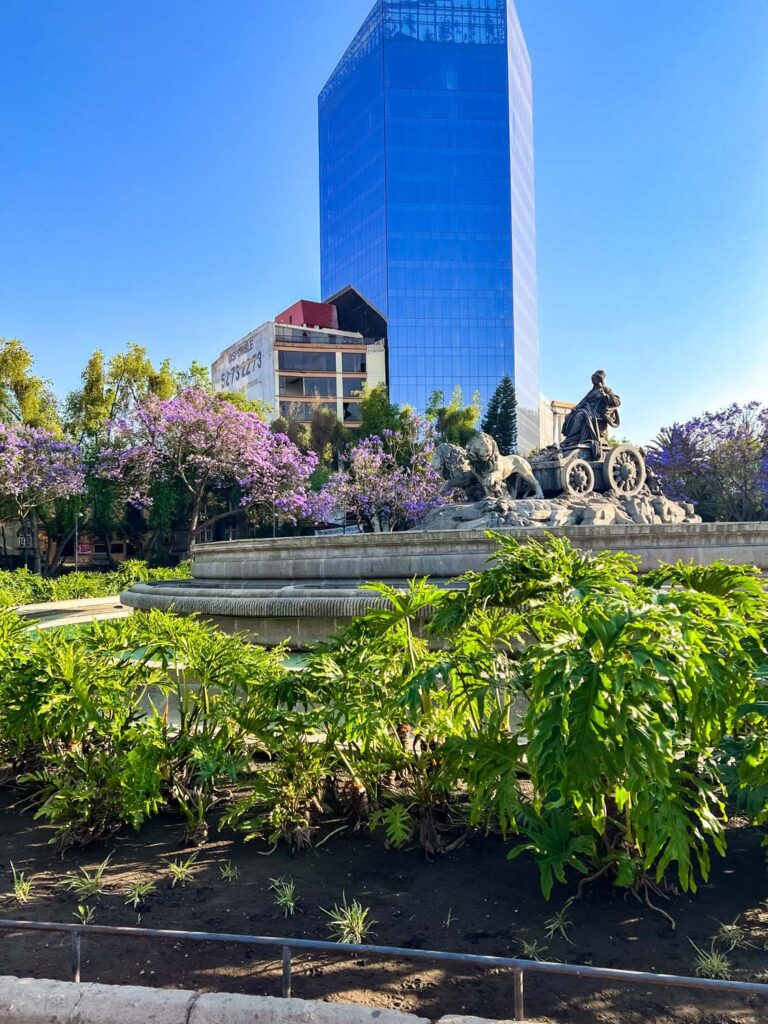
Casa Jacaranda
Named after the colossal Jacaranda trees planted outside his family home, Casa Jacaranda is one of the most beautiful slices of Colonial architecture in Mexico City. Chefs Beto and Jorge have lived here for the past few decades. They have both transformed and preserved the history of the house and the incredible Jacaranda trees that decorate their street. If you’re interested in learning more about Mexican food, you need to book yourself a cooking class at Casa Jacaranda. But their classes are more than just a cooking lesson. It’s an entire day-long experience filled with information on Mexican food history, market tours and intimate stories from Beto himself. By the end of the day, dining under the Jacaranda trees, you’ll feel like you have made new friends.
Parque México
My favourite spot in the entire city is Parque México. There is something so enchanting about this park, nestled away inside the heart of La Condesa. Surrounding the park is the quintessential Avenue Mexico. This large ring road features some of the most prolific Art Deco architecture found anywhere in the city.
The park itself feels like a secret garden, with beautiful sculptures, monuments and fascinating landscaping around every corner. During the spring, the outer edges of the park, lined in Jacaranda trees, explode into a ring of colourful blossoms. As the season progresses, the petals fall down onto the street and cover the roads like a purple blanket.

It is most definitely one of the most densely packed areas to find Jacaranda trees anywhere in the city. Plus, the peaceful atmosphere of the park makes it the ideal place for a picnic. There are dozens of fantastic takeaway shops around the park, my favourite being El Moro Churreria. Or just grab a cup of fruit or hot elote (corn) from a street vendor. The perfect way to enjoy a tranquil afternoon under the trees.


Avenida Veracruz
Just up the street from the Parque México, standing on the edge of Parque España, is the Avenida Veracruz. Avenida Veracruz is perhaps the most famous side street for seeing the Jacaranda trees. The density of trees means the street almost vibrates with colour. Look on google satellite street view and you can actually see the trees from high above. I love walking along this avenue to spot the incredible art deco architecture. And there are dozens of old manors and mansions featuring some of the best examples of antique Talavera tiles. But when the Jacaranda bloom they are the star of the show. And all the beautiful houses fade in the background against the beauty of these out-of-this-world blossoms.
UNAM
If you’re a fan of incredible architecture and unique gardens, it’s worth the trip to UNAM (National Autonomous University of Mexico). The university is surrounded by an impressive spread of green spaces and Mesoamerican-inspired building designs. The streets and pathways are lined with blossoming jacarandas in the springtime. But as they are spread out across the vast campus, it is a bit of a scavenger hunt to find them all.
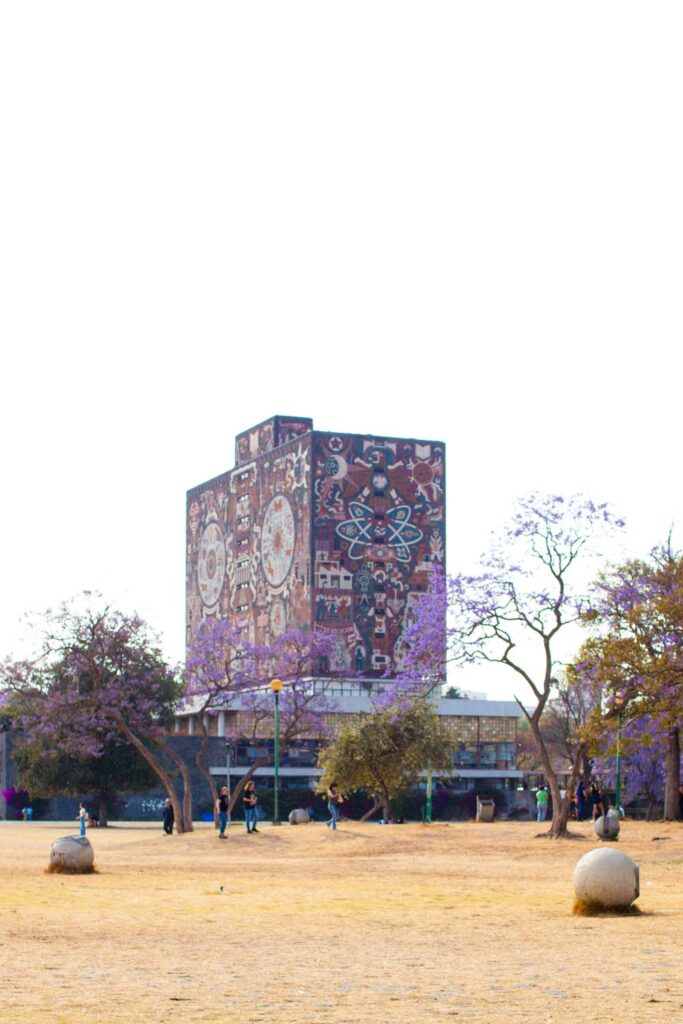
To find a sure-fire spot, head over to the UNAM Botanical Gardens. Here, you’ll find a cluster of Jacaranda trees outside the entrance. The UNAM Botanical Gardens are an incredible way to learn more about the flora and fauna which make Mexico City so unique! So it’s worth a visit all on its own.


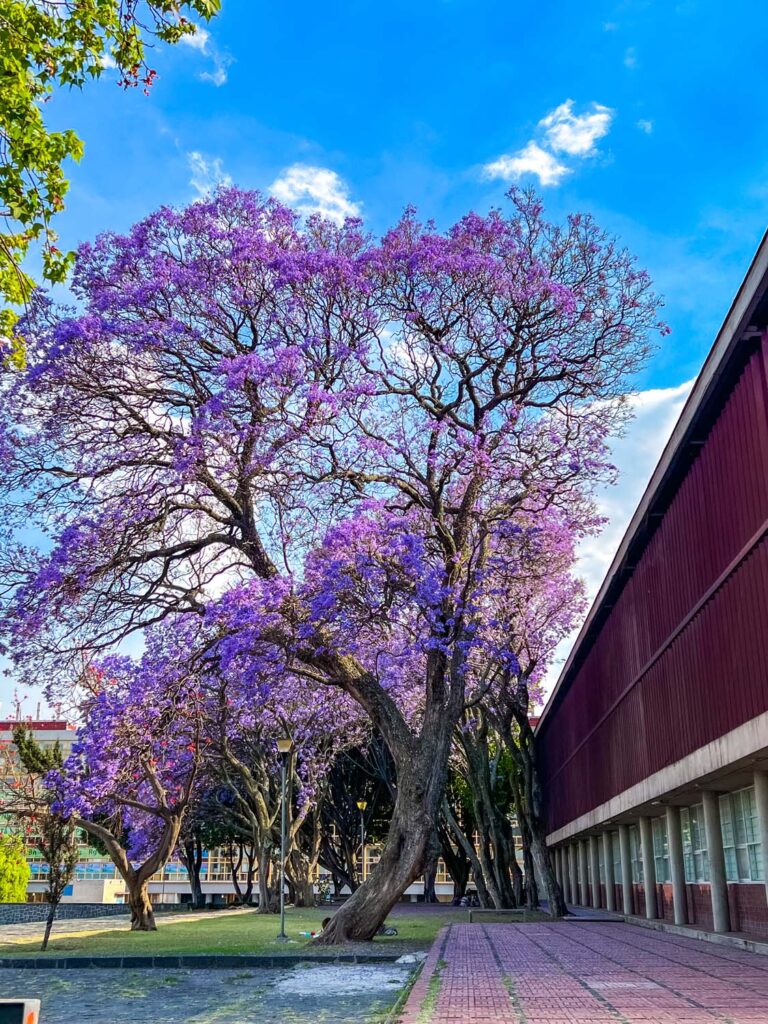
Avenida Francisco Sosa
In the south end of Coyoacan, make your way to the Avenida Francisco Sosa. Coyoacan has quickly become my favourite neighbourhood in Mexico City. Although it is found outside of the main city centre, the peaceful pace of life and gorgeous colourful architecture is why I keep coming back. And one of the most exciting streets to wander along is the Avenida Francisco Sosa. Cobblestones still make up the material underfoot as you walk along. The street seems left untouched by the modernity of the ages. Above your head, Jacaranda trees lean in towards you from either side of the street. Creating a canopy of shade above you.

Panteón de Dolores
Tucked away in the west corner of the city is the Panteón de Dolores. ‘Panteón’ is another word for the cemetery. But this one was first created for the illustrious dead of Mexico City. The entombed residents have all contributed to Mexico’s civic, national, and human values.
The gravestones and tombs found here are also some of the most beautifully designed memorials and monuments. I think that the Panteón de Dolores is one of the most beautiful cemeteries in the world. And it doesn’t get it’s fair due compared to places like Père Lachaise Cemetery or Highgate in London. But during the springtime, the Jacaranda trees interspersed between the graves make their debut. Their pale purple blossoms gently fall onto the stones below, bringing an added level of beauty and serenity to the sacred space.
Those are all my favourite spots in Mexico City that I visit during the Jacaranda season. There are hundreds of trees found all over the city, so you’re bound to stumble upon your own secret spot. These hidden gems are almost always the most amazing. But this is a good starting list to see the Jacaranda Trees in Mexico City! Let me know in the comments if you have Jacaranda trees in your city.
Happy Travels, Adventurers.
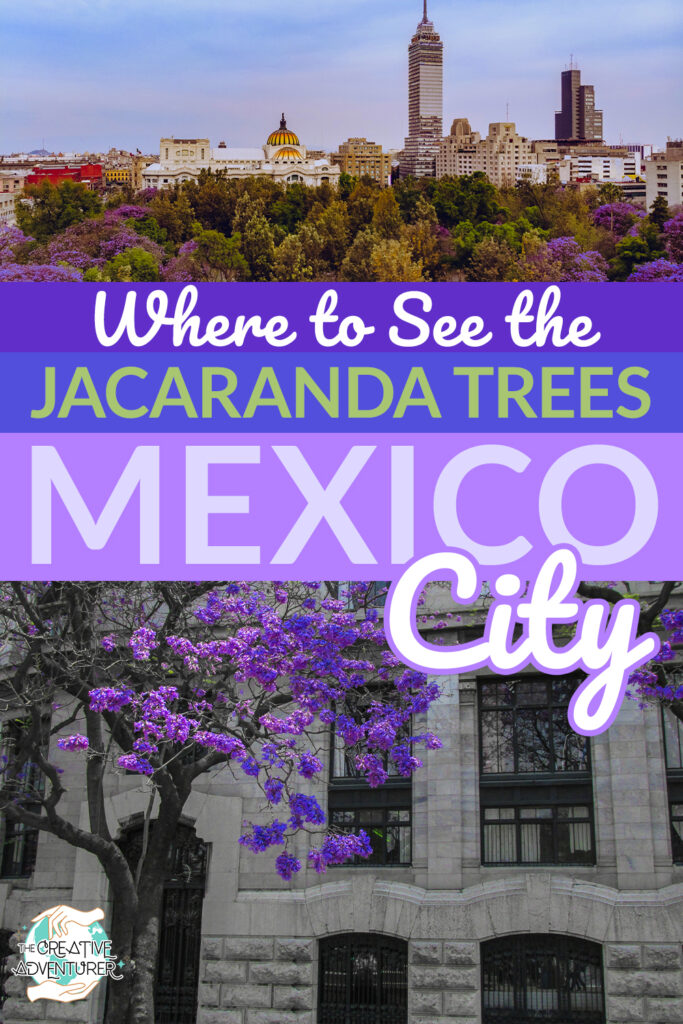

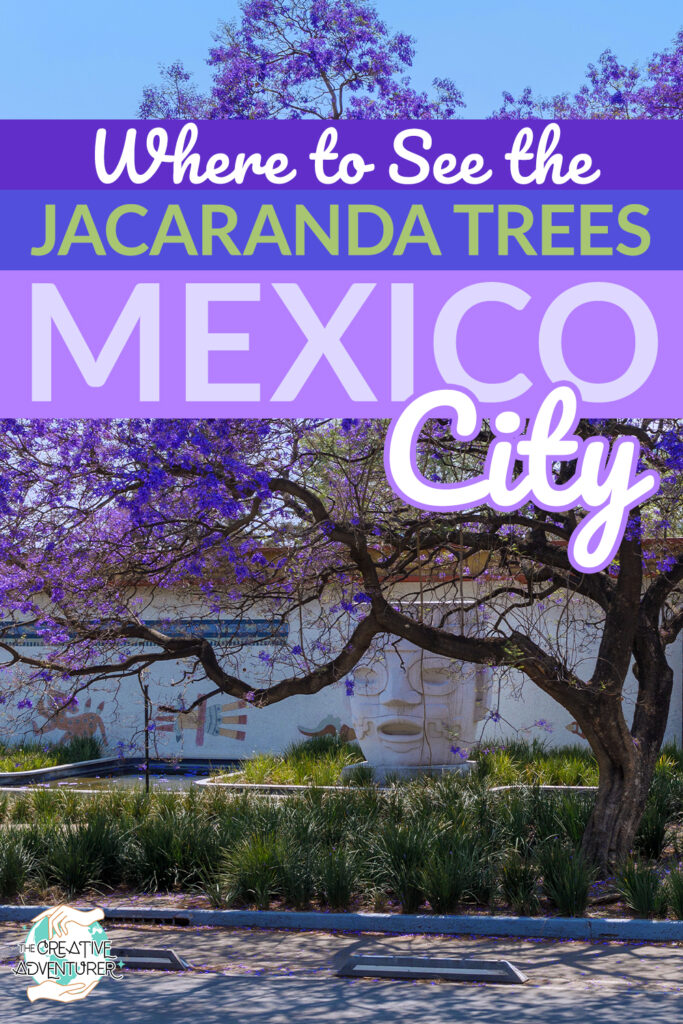
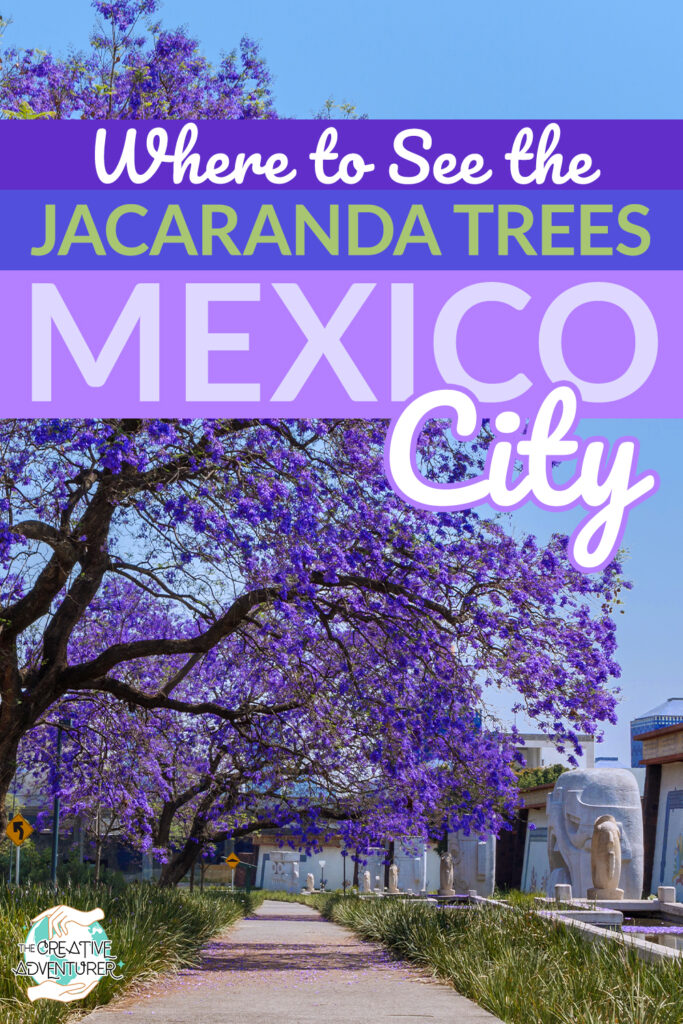
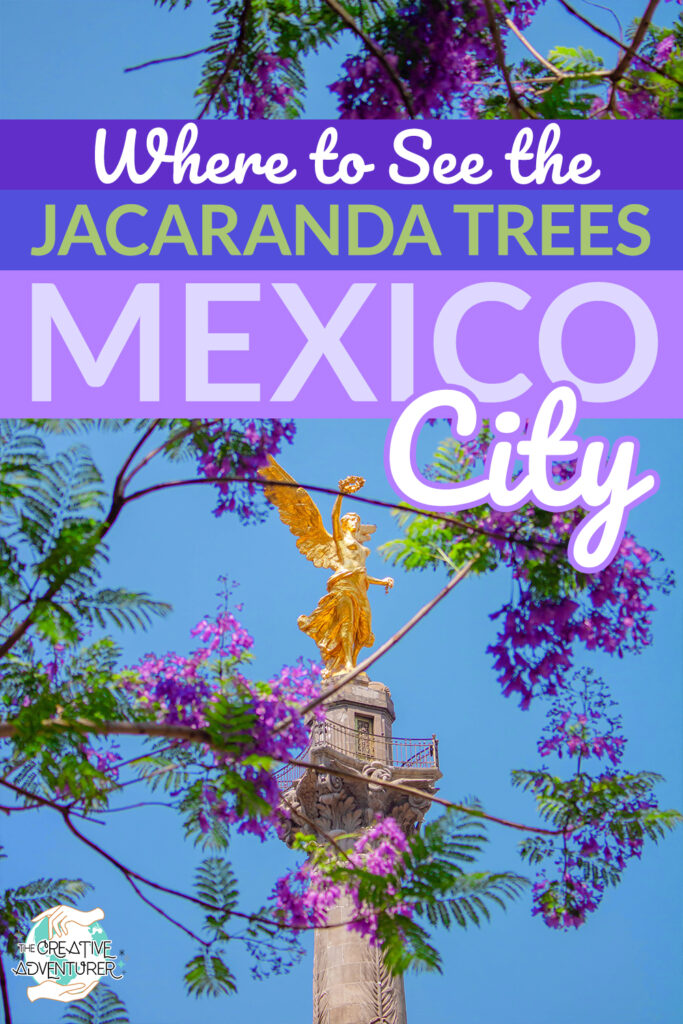



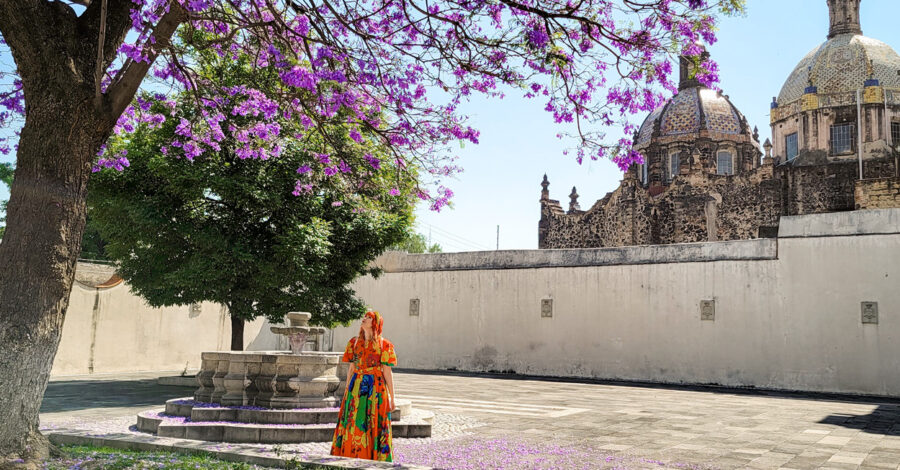
 (@dronemaniaks)
(@dronemaniaks)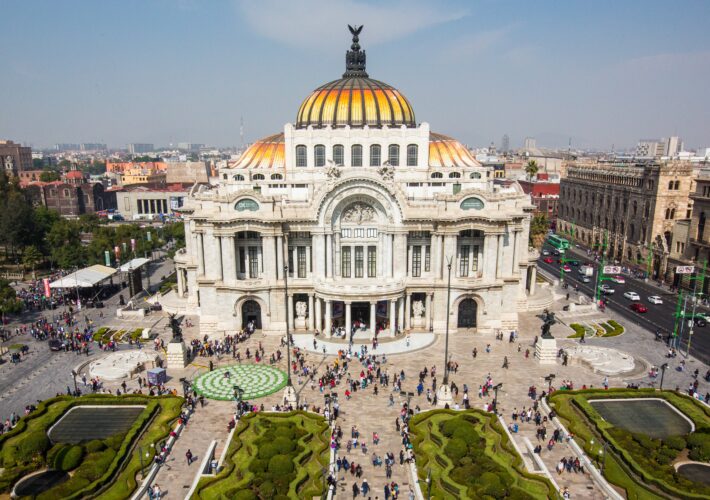
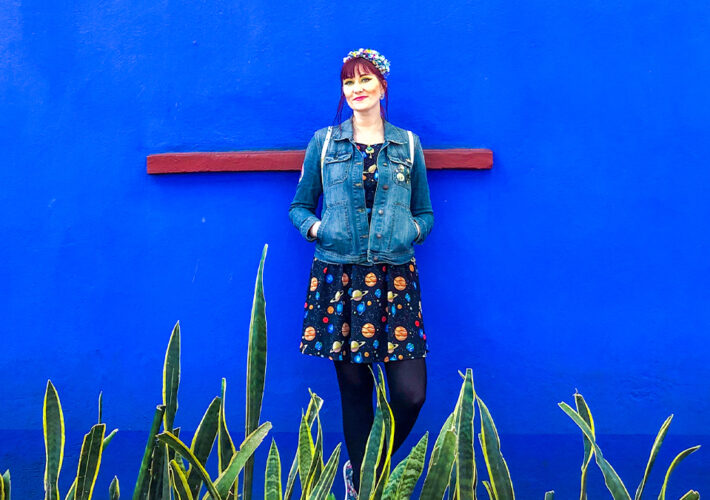
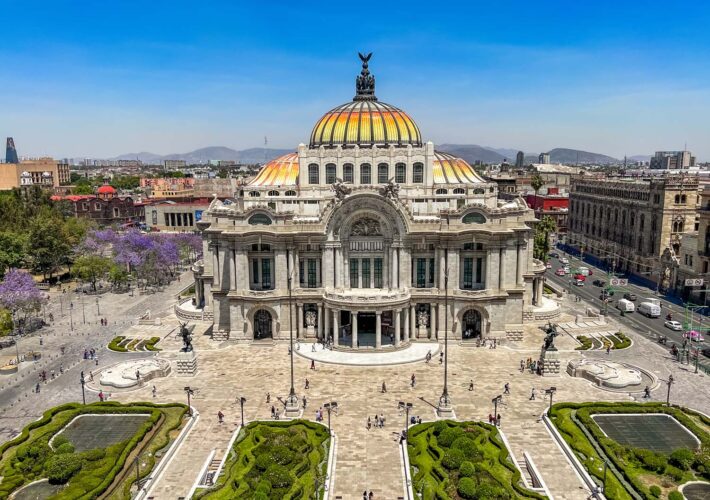

1 COMMENT
Payam
2 years agoThank you for the informative article. According to a NYTimes article the Jacarandas were planted around 1930 for President Pascual Ortiz Rubio. Which is accurate?